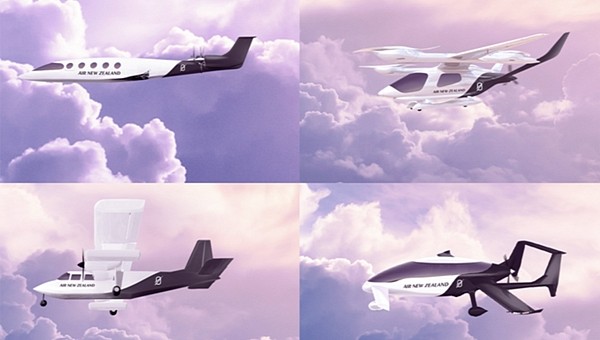Zero-emission long-haul flights are still a distant dream, but some airline operators are already working on green solutions that could renew their fleet one day. Air New Zealand just made a bold move, launching the Mission NextGen Aircraft program.
We’ve said it before – future AAM (Advanced Air Mobility) needs the cooperation of all stakeholders involved. This is one of the reasons why Air New Zealand chose to work not with one, but with several of the top developers of zero-emission aircraft propulsion technology.
The airline recently announced the official launch of its new program, called Mission NextGen Aircraft. Part of this program is collaborating with four top names in the industry – Eviation, Beta, VoltAero, and Cranfield Aerospace.
The goal is to eventually select one or more of these partners for the purchase of a new-generation, emissions-free aircraft, while also helping to “move the whole ecosystem along.” This new aircraft would eventually replace the operator’s domestic fleet of Q300 turboprops, with a launch date set for 2026.
Whether that will be a hydrogen-fueled airliner, a hybrid-electric one, or a SAF-powered version, it’s still undetermined. Each of the project’s partners brings a different perspective on the zero-emission flight, and focuses on different propulsion technologies.
Air New Zealand believes that in 12 months tops it will be ready to make its final choice for a zero-emissions demonstrator, either a cargo or passenger aircraft. Three of these aircraft will be purchased initially, with 20 more potentially following.
Meanwhile, it will also be working with infrastructure partners, such as Hiringa Energy, a local green hydrogen supply and refueling company. That’s because the new aircraft will also need a supporting infrastructure network.
It’s a big step, and it’s just the beginning of an ambitious plan that envisions a brand-new, all-green fleet that will hopefully kick-start operations by 2030.
The airline recently announced the official launch of its new program, called Mission NextGen Aircraft. Part of this program is collaborating with four top names in the industry – Eviation, Beta, VoltAero, and Cranfield Aerospace.
The goal is to eventually select one or more of these partners for the purchase of a new-generation, emissions-free aircraft, while also helping to “move the whole ecosystem along.” This new aircraft would eventually replace the operator’s domestic fleet of Q300 turboprops, with a launch date set for 2026.
Whether that will be a hydrogen-fueled airliner, a hybrid-electric one, or a SAF-powered version, it’s still undetermined. Each of the project’s partners brings a different perspective on the zero-emission flight, and focuses on different propulsion technologies.
Air New Zealand believes that in 12 months tops it will be ready to make its final choice for a zero-emissions demonstrator, either a cargo or passenger aircraft. Three of these aircraft will be purchased initially, with 20 more potentially following.
Meanwhile, it will also be working with infrastructure partners, such as Hiringa Energy, a local green hydrogen supply and refueling company. That’s because the new aircraft will also need a supporting infrastructure network.
It’s a big step, and it’s just the beginning of an ambitious plan that envisions a brand-new, all-green fleet that will hopefully kick-start operations by 2030.







